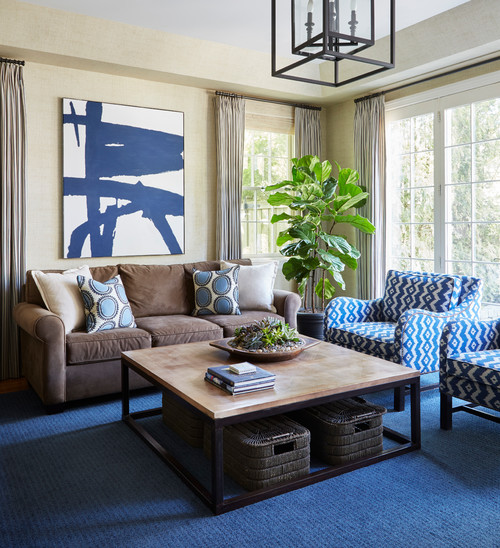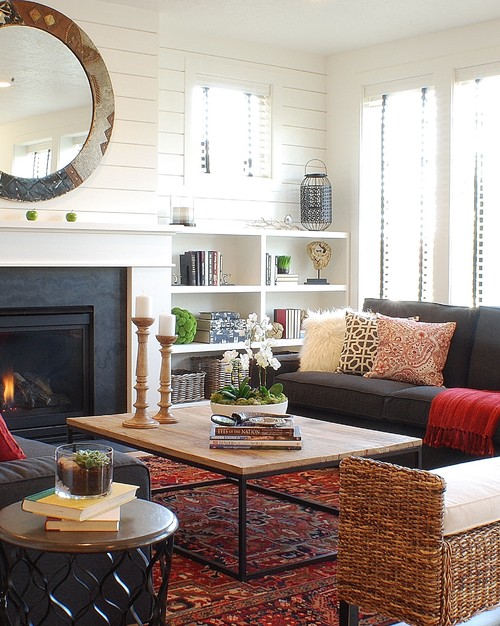Many people have difficulty placing the right accessories in their homes to get a designer magazine quality appearance.
Often rooms are filled with little vacation trinkets, decor gifts that may not suit your home's style, children's art projects, and cheap mass produced home decor purchased to fill the space but is poor quality (and possibly out of style) bringing the entire aesthetic of the room down.
Here are a few interior designer tips & tricks to help you get a designer look in your home using accessories.
 photo courtesy of kaboompics.com/photo/3490/books-and-purple-flowers-on-a-wooden-stool-by-the-bed
photo courtesy of kaboompics.com/photo/3490/books-and-purple-flowers-on-a-wooden-stool-by-the-bed
Remove everything
Start in just one room and take all of your accessories out of that room.
Sort your accessories into 4 groups.
Group 1 is accessories you no longer want to use (donate, recycle, or trash)
Group 2 is nicer accessories that have no sentimental value and are just fillers
Group 3 is accessories that are cherished, you love, and/or bring you joy so they must return to this room.
Group 4 is accessories that you want to keep but not in this room.
Start putting the accessories from group 3 back into the room first.
Determine where you have holes that you want to fill, then you can fill in as needed with accessories in group 2.
Experiment by bringing items in and out of your room.
Put things in different locations than they were before to see how they look.
Stand back and see how things look at different places in your room.
This process might only take a few minutes or it might take several days of experimentation for you to get your room accessorized just right.
Make a shopping list of accessories that you still want to get for your room after you have experimented with your existing items.
Before purchasing anything, go "shopping" around your home to see if an item you already have might look better in your room than its current location.
Here are some interior designer tips.....
Less is more
If you surround a precious accessory with a cheap accessory, the cheap accessory makes the precious accessory seem less important.
Make sure to properly showcase important meaningful accessories by themselves to highlight their importance and beauty.
If the precious accessory is small, you can set it on a stack of hard back books to make it look taller.
The more items you have, the more you have to maintain, so don't overdo it.
Bigger is better
The number 1 mistake people make with accessories is scale.
When purchasing accessories for your home, select one larger item instead of several smaller items.
Smaller items tend to look cluttered while larger accessories feel bold and special.
When in doubt, select something a bit oversized.
If you really want to use smaller items, cluster them together on a tray or in a tight grouping so they appear as one collection instead of a cluttered mess. You can use a decorative tray to contain small items like perfume bottles, liquor bottles, magazines, and more.
One of a kind
Your most prominent accessories in the living areas of your home should be one of a kind or limited edition items instead of mass produced items that local discount stores sell in mass quantities.
You can use architectural antiques, items from your travels, unique items found in nature, or anything else that might cause someone to stop a moment and look at your accessories instead of passing by them.
Consider shopping at flea markets, estate sales, antique centers, online sources with limited quantities of designer goods, Facebook Marketplace, and other places that sell one of a kind items that can be used as accessories.
Don't overdo it
Especially in rooms that are very task oriented (such as a kitchen, bathroom, or home office), don't overdo the accessories.
If you must use accessories, make them functional. Consider using pretty clear glass jars filled with functional items such as rice, cotton balls, paper clips, etc.
Plants and flowers
Add a plant or flowers to your room to make it feel more alive, natural, and lived in.
Avoid using fake flowers or fake plants if at all possible.
Other Articles You Might Like......






